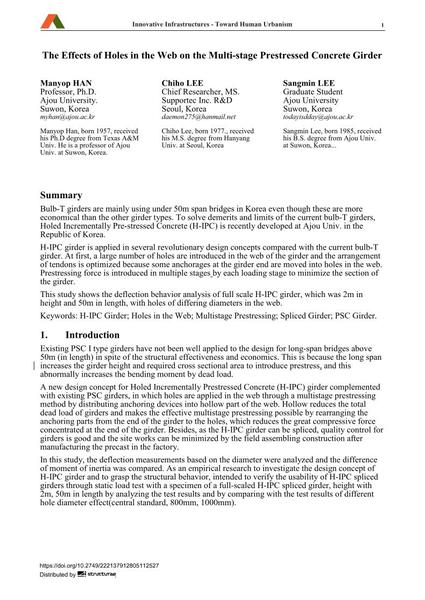The Effects of Holes in the Web on the Multi-stage Prestressed Concrete Girder

|
|
|||||||||||
Bibliographic Details
| Author(s): |
Manyop Han
Chiho Lee Sangmin Lee |
||||
|---|---|---|---|---|---|
| Medium: | conference paper | ||||
| Language(s): | English | ||||
| Conference: | 18th IABSE Congress: Innovative Infrastructures – Towards Human Urbanism, Seoul, Korea, 19-21 September 2012 | ||||
| Published in: | IABSE Congress Seoul 2012 | ||||
|
|||||
| Page(s): | 1798-1804 | ||||
| Total no. of pages: | 7 | ||||
| DOI: | 10.2749/222137912805112527 | ||||
| Abstract: |
Bulb-T girders are mainly using under 50m span bridges in Korea even though these are more economical than the other girder types. To solve demerits and limits of the current bulb-T girders, Holed Incrementally Pre-stressed Concrete (H-IPC) is recently developed at Ajou Univ. in the Republic of Korea. H-IPC girder is applied in several revolutionary design concepts compared with the current bulb-T girder. At first, a large number of holes are introduced in the web of the girder and the arrangement of tendons is optimized because some anchorages at the girder end are moved into holes in the web. Prestressing force is introduced in multiple stages by each loading stage to minimize the section of the girder. This study shows the deflection behavior analysis of full scale H-IPC girder, which was 2m in height and 50m in length, with holes of differing diameters in the web. |
||||
| Keywords: |
Spliced Girder H-IPC Girder Holes in the Web multistage prestressing PSC Girder
|
||||
